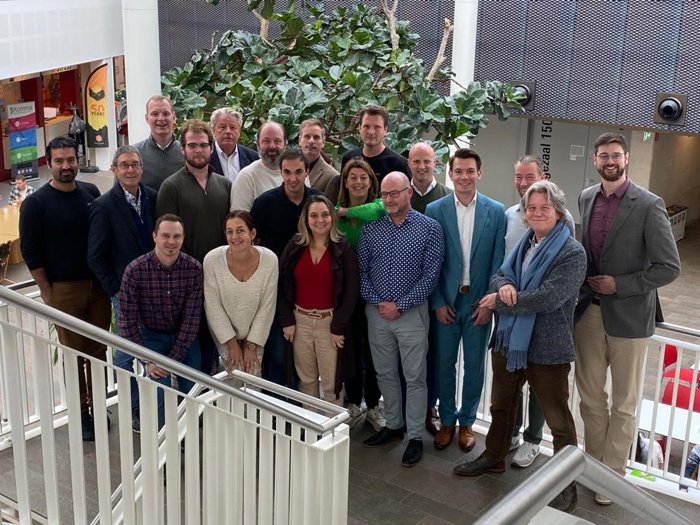This week scientists at the University of Twente are launching a study on resilient and climate-resistant transport chains. Their aim is to make these so-called corridors more resistant to disruptions caused by extreme weather. For example, drought resulting in low water levels and blockages of rivers and canals. An advanced computer model - called a digital twin - guide the actions of parties such as transport companies and industry. The researchers from the Department of Industrial Engineering and Business Information Systems (BMS Faculty) are joining forces with the Port of Twente, a partnership of more than 80 companies, knowledge institutes and governments in the region.
The digital twin contains virtually all aspects of a transport chain, such as the transport companies including how many trucks and ships they have, and their capacity. It even includes the size of storage, roads, waterways, junctions and locks, with their capacity at a given water level. The scientists populate the model with current data on weather, water levels, traffic, supply and demand of certain products and commodities. They also use historical data and look for emerging patterns. The model shows how goods flow through the chain, indicates possible bottlenecks and makes predictions. In collaboration with the companies, the scientists examine which measures are successful, such as arranging extra transport capacity or stock. Ultimately, the model itself will become part of the transport chain: a central component of decision-making.
Fiscal disaster
The Netherlands has over 40 commonly used transport chains. In these, goods or commodities – whether a mobile phone, a pile of gravel or a car - go from truck to ship to train and back again, sometimes as many as 10 or 20 times before reaching the buyer.
In the summer of 2022, a prolonged drought caused a multi-million dollar loss in one of those corridors. Due to a low water level in the river IJssel, the length of time ships had to wait to enter the Twente Canal at Eefde increased to 75 minutes. A significant increase from the normal 25 minutes. That is obviously annoying for the skipper who has to wait 50 minutes longer. But it had much bigger consequences: the capacity of the Twente Canal dropped by two-thirds. In the transport sector, this has major consequences. "Then a domino effect often takes place," says Sebastian Piest, researcher at the University of Twente, "to compensate for the shortage of transport capacity on the water, 13,000 trucks were suddenly required. That is negative for the environment, because transport by ship is cleaner. But more importantly, that capacity was not available. The supply of raw materials stagnated and further down the chain this eventually led to the temporary closure of a factory in Hengelo. Affected companies suffered a million-dollar loss."

Group photo at the project kick-off
Improving flexibility
In early 2012, a complete and prolonged blockage of the Twente Canal was also caused by a lock gate that unexpectedly came down at Eefde Lock. Since then, an additional lock passage has been built. Achieving more physical transport capacity makes a corridor more resilient to disruptions. However, it is costly and takes a long time.
Therefore, UT researchers are focusing on another kind of resilience that can be more quickly deployed. This approach is to increase flexibility in the chain and anticipate future conditions. "Say you know very precisely how low the water level in the river IJssel will be in three days' time and what this means for the capacity of ships, then as a company you can arrange alternative transport in advance, organise fallback locations or stock up on extra supplies," says Piest. He says this kind of flexibility is already built into the system. "During a sale like Black Friday, companies also provide extra capacity. The transport world is creative and solves these sorts of issues all the time."
Of course, there is already a lot of monitoring in the transport world. However, relevant data on conditions on the water, on the road, and within companies, is fragmented. "We want to pool all the data and open it up so that everyone can benefit from it," says Piest. "For sensitive information on price agreements and volumes that companies would rather not make public, we create a secure environment. That way, they can still use it in the model."
Water traffic tower
Ultimately, Piest envisions a sort of 'water traffic tower' that monitors and controls a corridor such as the Twente Canal. In order for this approach to succeed, companies need to unite and undertake agreements for co-operation. How do you make sure they do not choose self-interest in an emergency? Think of the hoarders of toilet paper during the early days of the COVID-19 pandemic, that resulted in empty shelves, despite the fact that there was actually enough paper for everyone. Piest sees a serious commitment among stakeholders to solve this together. "These are things you don't solve alone. In the end, everyone benefits from a smooth transport chain."





